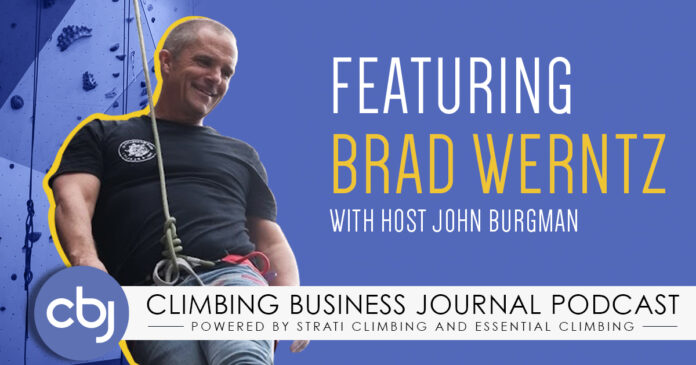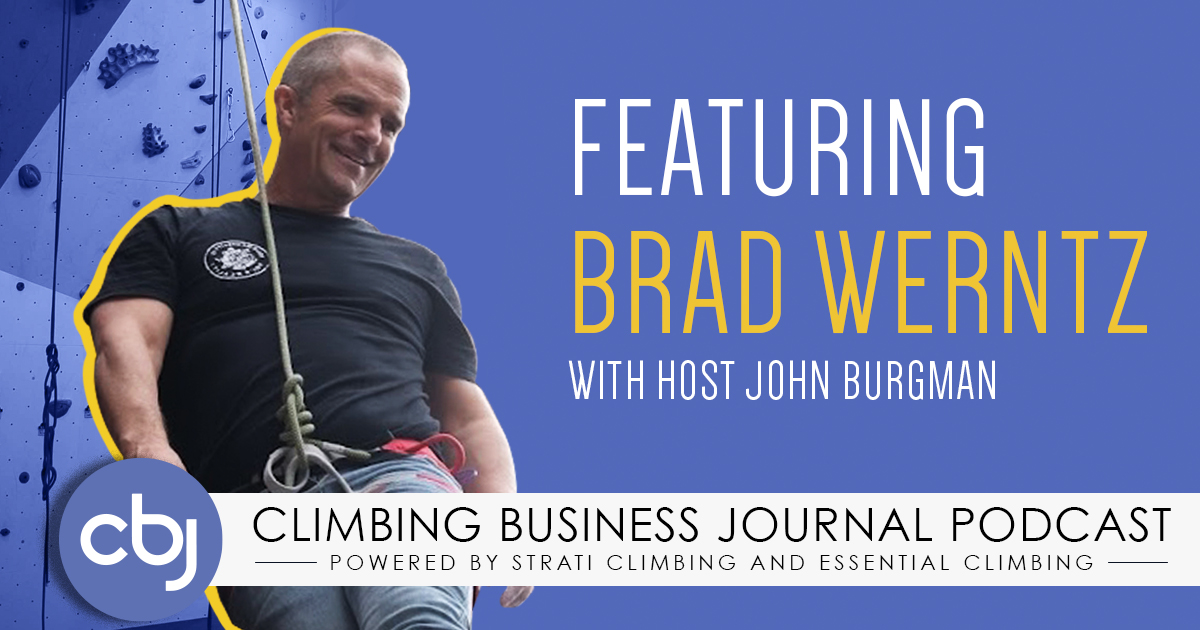
Retail plays a key role in most gyms’ day-to-day operations, while also being a visual component of the facility, so today’s conversation is all about gym retail: what sales strategies work well, what doesn’t work so well; what sells, what doesn’t sell. We speak with Brad Werntz, President of the two Boulders climbing gyms in Madison, Wisconsin, both of which have retail components. As a longtime gym operator and former sales representative for various climbing brands, Werntz has seen the business value of a well-managed retail area, as well as some potential pitfalls to avoid.
Thank you Strati Climbing and Essential Climbing for your support!
And thank you Devin Dabney for your music!
Timestamps
00:00 – Intro
05:07 – Boulders’ retail space
09:16 – Why Boulders doesn’t sell shoes
13:50 – The “cookie cutter” approach to retail
16:40 – Mistakes Werntz sees in retail spaces
20:40 – Are gyms missing opportunities without an online retail platform?
23:20 – Properly stocking a retail space
26:26 – Approaching the retail area from a personal standpoint
29:38 – Strategies: package deals and promos
34:16 – Branded gear
47:24 – Desirable qualities in job candidates
52:05 – Vending machine bestsellers
55:52 – Closing
Abridged Transcript
BURGMAN: Could you give us an overview of Boulder’s current retail areas, how stuff is arranged? An audio walking tour, I suppose, of your different retail areas?
WERNTZ: …Our retail shops in both of our gyms are literally just two 4×8 flat sections to the wall. It’s help yourself. Our philosophy is: Things that touch the body that you can use in the gym is primarily what we sell. There’s a couple of categories that we have that aren’t in that way, but basically we’re talking about chalk bags, chalk, carabiners, tape, and then our own branded swag, which is another conversation that we definitely need to talk about. But we don’t sell climbing shoes. We do sell belay devices and harnesses at our rope gym; we have a rope gym and a bouldering gym. But basically, they’re things that you can use immediately in a gym. So, what we don’t sell—quickdraws, ropes, climbing shoes—those are big categories that many gyms do well with. We’ve decided not to do those because we don’t have inventory space for those and that’s not what our customer comes to us for…Basically, just the high turn, grab it and go, grab it and use it in the gym is primarily what we sell in the gyms, and it does very well. On a dollar per square foot basis, we’re quite high for our retail space because we keep those items that turn, that are high margin, that are easy to replenish, that are low tickets pretty much—easy buys.
Can you explain a little bit about that decision not to sell shoes?
I think it’s unique to us. I know that gyms do very well with shoes; some of my best Five Ten accounts were climbing gyms, for instance. But for most gyms, depending on the size of the gym, you look at your overall traffic and what people come there for. My advice as a rep was you just need four models, maybe six. You need a beginner and an advanced—not even an expert shoe—for unisex, and then you need the same for women. So that’s four models. And then you can take the six by adding an elite shoe for men and women. And then there you are. And you should have two brands probably if you do shoes…You shuffle your mix, but you need two brands because you need two different fits. And then you need the models, and you need a good selection to sell footwear. You don’t just need it because of brand favorites…You need it because they fit differently, and people have different affinities based on how that feels…
So, when you take your four to six skews of shoes from two brands and you do a size run of those, you very quickly get into five-figures of inventory [cost]. And so, with five-figures of inventory [cost], that’s inventory that generally does not turn 100% in a year. As a matter of fact, for climbing shoes in general, if you get one turn out of your entire inventory, that’s pretty magic because that means you sold the size five and the size 13 and you had everything you wanted and you fit everybody perfectly and they walked out the door and then you’re into reorder situation…So, it ends up being this $10,000+ commitment preseason that you pray you get out of before you have to liquidate, and you’re always out the size or always out the other model to compare to. And so, you’re just not well positioned to make the sale as often as you’d like to think. Your comment, “Oh, they’re just over there, try them on…” That works for the beginner, which is why a lot of gyms focus on just having beginner shoes. But once people get a little bit of experience, they need to compare, and I believe they should. So, my question to people who think about that is: Can you stock enough shoes to be that go-to point? …If you can convert the inventory, then by all means invest in it. But if you struggle to get to four models, it’s a good question as to why you should even do that.
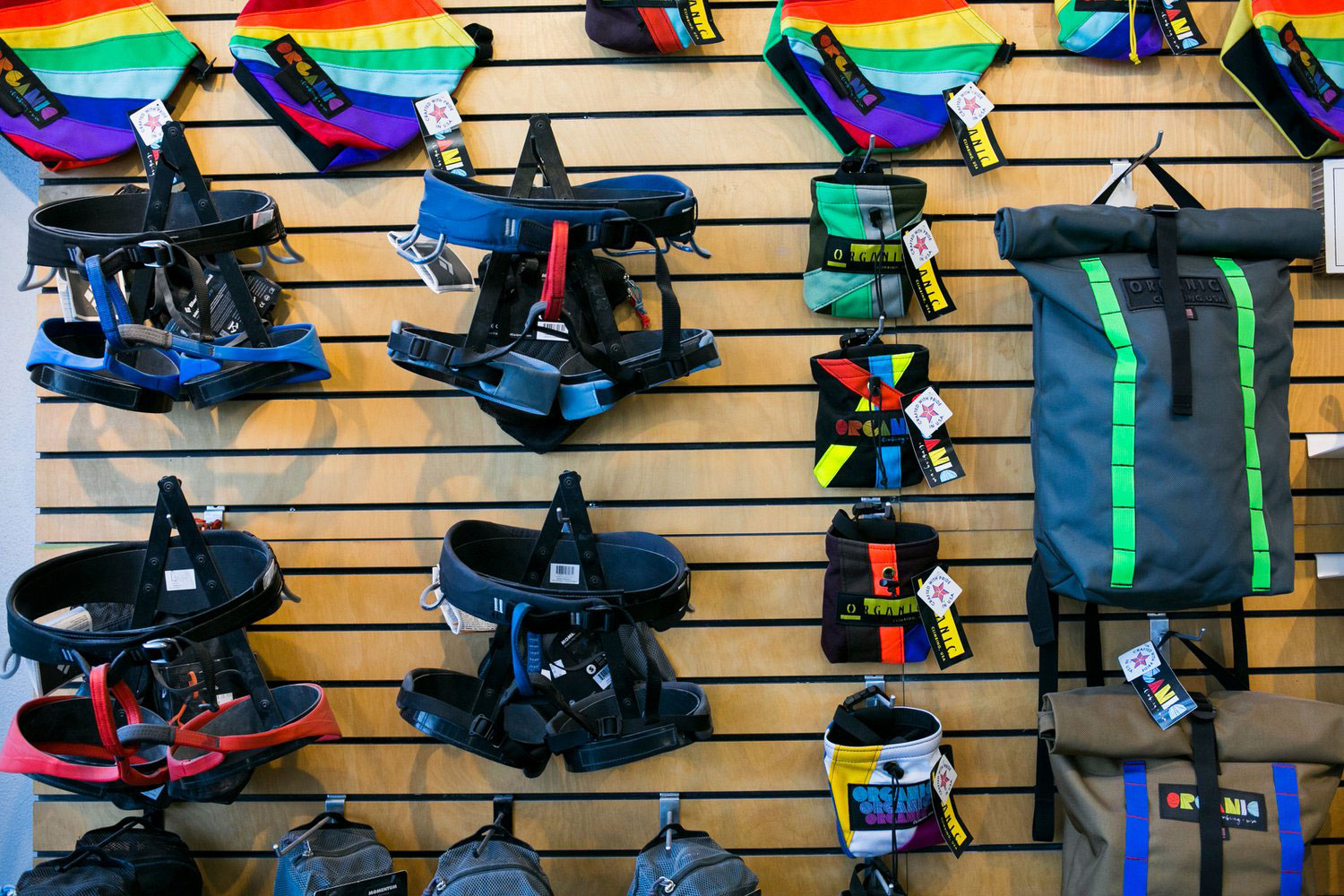
As you look back at your career as a [brand] rep, are there some—let’s call them mistakes maybe, I don’t know if that’s exactly the right term, but mistakes that you see other gyms doing with their approach to retail?
Yeah, mistake is a hard thing because a [retail] mistake in an outdoor retail store means you go bankrupt. A [retail] mistake in a climbing gym, since it’s not our major business choice, means you can maintain that mistake for a long time…But the mistakes that people make, I think, is going too hard. The math on climbing footwear, for instance, is really expensive. It’s a high four, low five-figure spend to just get a stocking inventory of four models or six models, to get that going, and they don’t turn very quickly…I think the other mistake that I see is making “gear museums”— especially new gyms. Like, “We’re going to have porta-ledges, we’re going to have haul bags, we’re going to have full size runs of every cam, we’re going to have…” And they just become gear museums that you dust every month because you just don’t do the turns that you think you’re going to do in those products. And they’re image pieces that are probably better suited for online purchase at this point because it’s really difficult to stock them and sell them consistently.
What are the keys to keeping a retail space stocked? And what are just the keys to keeping a finger on the pulse of things related to stocking?
…Retail is a whole different business unit. You have to have somebody in charge of keeping it stocked, keeping it merchandised, keeping things turning. And knowing when to reorder when you’re out of things is really critical, especially for things like chalk and tape, the high turning items. I mean, our number one category is chalk. We sell a ton of chalk, and that’s just stacking apples. It’s a commodity. The display works when it’s full, and so you fill it every day and you sell three to five buckets of it or the big blocks every day. But they only sell if it’s full…So inventory is a challenge, especially with supply chain issues. And again, on this preseason model that many companies need at their end, that’s a question you need to ask is whether you can preseason, whether you can turn the goods you brought in, and whether you can reorder, because the footwear is kind of a nightmare from that standpoint. But belay devices, harnesses can also fall under that. And if you’re out of size medium harnesses, that’s a problem. And if you haven’t preseasoned them, sometimes you can’t get them. So, those are good questions to ask as you go into this: Can I maintain this separate business unit or not?
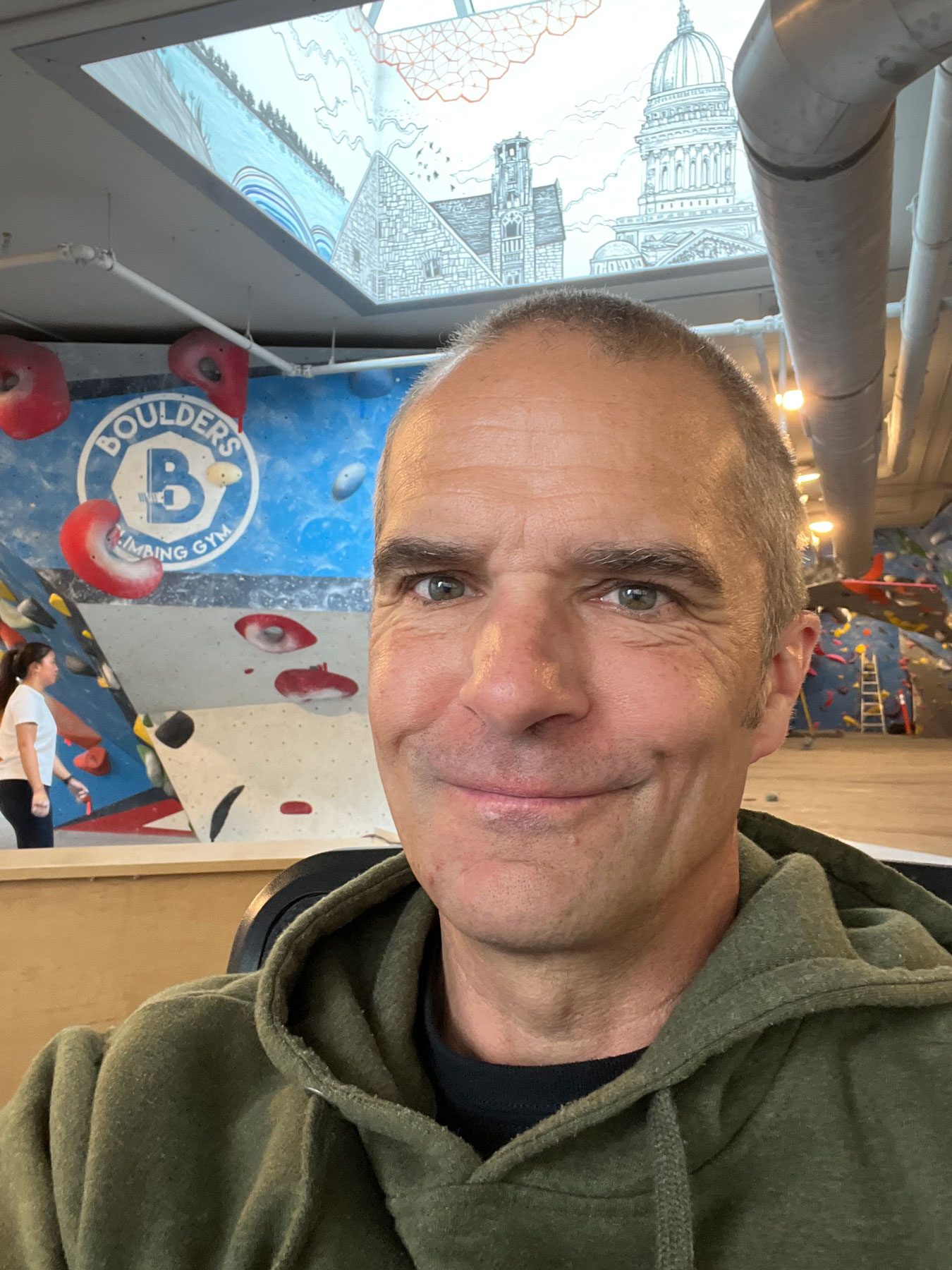
Let’s talk about branded gear. What sells the most at Boulders? Do you have it made somewhere locally to kind of coordinate with the community, with a local business, or do you have it outsourced to somewhere far away via the Internet? How do you deal with quantity of branded gear?
…Our brand is really flexible, and so we have our own in-house graphic artist, and he comes up with crazy designs that we sell as limited editions. And we try to do six of those a year, and we do them on seasonal appropriate platforms and colors. So, by platform I mean it’s midwinter, so we’re selling a lot of sweatshirts and long sleeve shirts and heavier weight T-shirts, whereas in a couple of months we’ll switch to lightweight T-shirts in brighter colors and tank tops and maybe just a crew neck sweatshirt, and then we’ll move through that. But we create limited edition goods that we’ve actually incentivized our customers to purchase right away, because by [being] limited, they’re limited—maybe we do two size runs per location of the one really cool shirt—and people know they need to grab it really quick. And we broadcast that: “Hey, check out this new limited-edition design.” And people jump all over that. I mean, we sell through those sometimes in the day if they’re cool designs or if the timing is right, and we’ve had some really great runs on that. And what that’s done for us is create all these back years of special edition shirts. And you can kind of see who’s OG in the gym by their shirts. They come in and they’re proud, “Oh, this is from 1998.” And there’s actually a submarket of people trading these things…
On the flip side, we do what we call our generic platform, which is just really Boulders Climbing Gym, just a logo, just really simple. And we’ll do it in seasonally appropriate colors and platforms, and we’ll do six of those a year, too. So basically, every month we’re debuting a new limited-edition platform and then we’re supplementing with what we call the generic or standard platform that’s just kind of a boring, Boulders Climbing Gym T-shirt. And those also sell really well. Particularly if somebody can’t find their size in a limited-edition, they go, “I’ll just buy this one.” They get incentivized to buy a Boulders shirt and they can’t find their size in the limited one, so they buy the general one, and that works really well for us.
That’s been huge, and to answer the other part of your question, we do all that locally. We have our own graphic artist, and we also solicit artwork from our community in the form of T-shirt contests, or we’ll reach out to our artist and say, “Hey, love what you did on that mural,” or “I saw this thing, would you design a T-shirt for us?” And in that case, we’ll sell them at full value, but we’ll give all the proceeds to the artist. So, if we sell a sweatshirt for $50, that means they’re getting $25 and we’re just covering our cost. That’s not a money-making venture for us, that’s a branding venture, creating high-quality, limited-edition garments that kind of go into that value transaction mode when people trade them years later…The other thing, too, is we do themed shirts. We do a pride shirt every year; we do shirts that focus on different aspects of our community…We have a strong group, Madison Women Climbers, for instance, and we made a women-themed shirt that was super popular. And it’s still popular; people want that shirt.
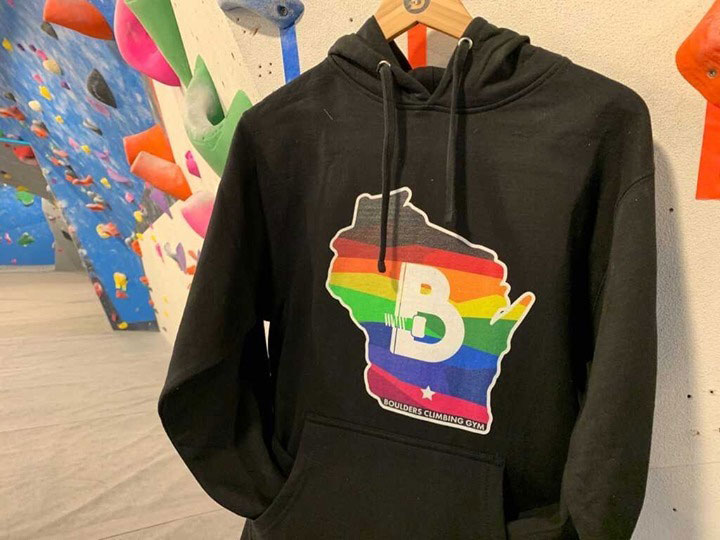
At the very beginning of our conversation, you mentioned vending machines. Real fast here before we go, what are the vending machine items that you have found sell the best?
…Vending machines are super critical, I think, to any gym because people need to eat and drink when they’re in the gym. And if you don’t supply that, they’re going to bring it, and then you miss that opportunity. We purchase vending machines that distribute more than food and drink. Originally, we had guidebooks in there and we had tape and we had hand files and anything we could stack in there, and we found that those didn’t sell as quickly as just self-serviced. So, we pulled all that stuff out of there, and then we hit kind of highfalutin: “We’re going to sell only organic, only these premium things, only the pure athlete stuff, the elixirs that are going to make us stronger and thinner and more handsome and more attractive. We’re going to be friendly to puppies and pigs and everything else, and it’s going to cost $5 an item.” And every time we put those in there, it’s not that they don’t sell; it’s just that when I go to Costco and buy a 36-bag box of the Frito Lays products and buy the big box of pretzel-mixed sort of things and buy the assorted Gatorade bottle collection, I buy them at like fifty cents a unit and [our customers] just burn through…It ends up being a highly profitable part of the gym. It offsets—we average a 40-margin through all of our things, but it offsets that sweatshirt that should be $100-150 that we’re selling for $50, when we swallow all the margin on it just to get it into the field. So, we average a 40-margin largely because of our vending machine, our tape and our chalk. And then that allows us to be really flexible with higher ticket items that we’re buying and placing for strategic reasons…

John Burgman is the author of High Drama, a book that chronicles the history of American competition climbing. He is a Fulbright journalism grant recipient and a former magazine editor. He holds a master’s degree from New York University and bachelor’s degree from Miami University. In addition to writing, he coaches a youth bouldering team. Follow him on Twitter @John_Burgman and Instagram @jbclimbs. Read our interview Meet John Burgman, U.S. Comp Climbing’s Top Journalist.




